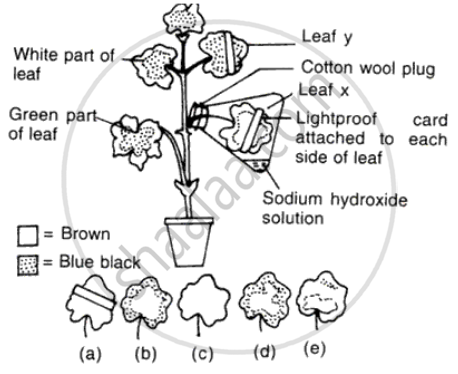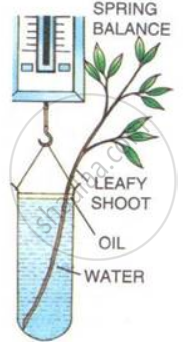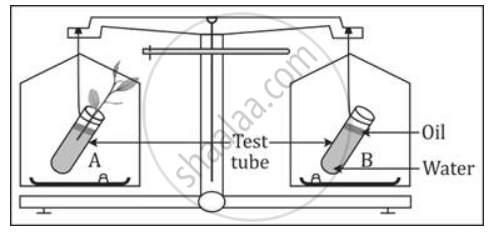Advertisements
Advertisements
प्रश्न
Transpiration is a necessary evil in plants. Explain.
उत्तर
Transpiration is a necessary evil in plants because it is inevitable but potentially harmful. Loss of water from the plant results in wilting and causes the death of a plant if a condition of drought is experienced. But transpiration is of great significance for the plant.
- Water is conducted, in most tall plants due to transpiration pull.
- Minerals dissolved in water are distributed throughout the plant body by Transpiration Stream.
- Evaporation of water from the cells of leaves has a cooling effect on plants.
- The wet surface of leaf cells allows gaseous exchange.
संबंधित प्रश्न
Differentiate between Transpiration and Evaporation
What causes the opening and closing of guard cells of stomata during transpiration?
Under what conditions do plant transpire more quickly?
Differentiate between osmosis and transpiration.
Why is there a need for a transport system in plants and animals?
Transpiration is the loss of water as water ______ from the ______ parts of the plant.
(a) State whether the following statement are True or False.
(b) Rewrite the false statement in the correct form by changing either the first or the last word only.
Most transpiration occurs at midnight.
Give suitable explanation for the following:
Cork and bark of trees help in preventing loss of water
A well watered healthy potted plant with variegated leaves was kept in darkness for about 24 hours. It was then set up as shown in the diagram and exposed to light for about 12 hours. At the end of this time, leaf x and y were tested for starch. Study the diagram and answer the questions that follow:
(i) Why was the plant initially kept in darkness for 24 hours?
(ii) What is the function of sodium hydroxide solution in the flask?
(iii) Select the correct leaf from the five available choices shown in the diagram as a, b, c, d and e. Rewrite the correct answer by filling in the appropriate letter for the questions that follow:
1. After the starch test, leaf x would look like ______.
2. After the starch test, leaf y would look like ______.
(iv) The experiment with leaf y shows that photosynthesis requires the presence of certain factors. Mention any one factor.

Given alongside is the diagram of an experimental set-up to demonstrate a certain phenomenon in plants.

Would it make a difference if the experimental set-up is kept in bright sunshine?
The figure given below represents an experimental setup with a weighing machine to demonstrate a particular process in plants. The experimental setup was placed in bright sunlight. Study the diagram and answer the following questions.

Name the process intended for study.
Give Technical Term
When cobalt chloride paper is placed on lower and upper surface of the leaf, the paper of which side becomes more pink?
Mention, if the following statement is True or False. If false rewrite the wrong statement in its correct form:
Calcium chloride paper is used to demonstrate transpiration
Boojho’s uncle was hospitalised and put on dialysis after a severe infection in both of his kidneys.
When does it become necessary to take such a treatment?
Write a note on Transpiration.
Which one is not related to transpiration?
Will the ascent of sap be possible without the cohesion and adhesion of the water molecules? Explain.
A root hair is derived from ______ cell.
